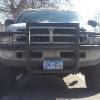Recommended Posts
-
Recently Browsing 0 members
No registered users viewing this page.
-
-
Recent Topics
-
- 3 comments
- 72 views
-
- 398 comments
- 33,255 views
-
- 18 comments
- 316 views
-
- 4 comments
- 149 views
-
- 2 comments
- 729 views
-
- 5 comments
- 1,577 views
-
-
-
Recent YouTube Posts



